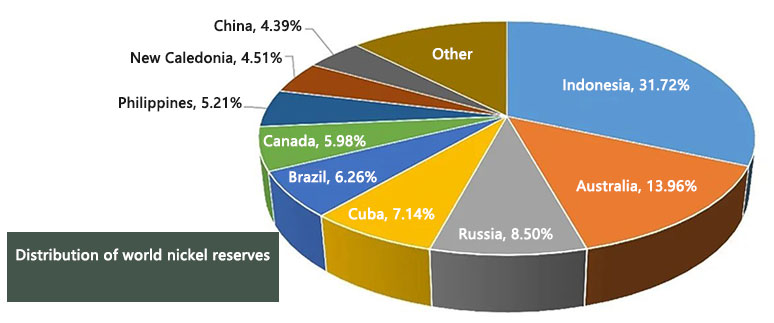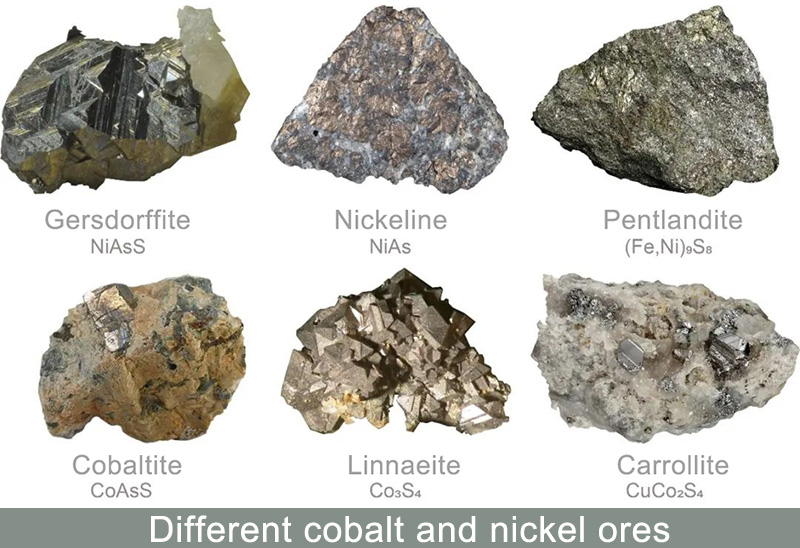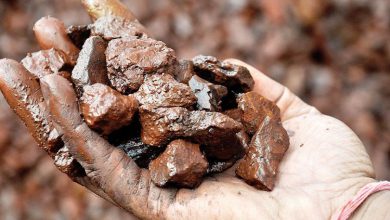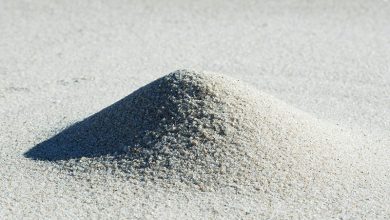Cobalt and nickel are both strategic mineral resources and also a mineral in short supply. Cobalt and nickel are ranked 27th and 28th in the periodic table, and their outer electronic structure, melting point, boiling point, density and other properties are very similar. At the same time, they both have very good ductility, corrosion resistance and ferromagnetism. Therefore, cobalt and nickel are not only a pair of good neighbors, but also a pair of good brothers.
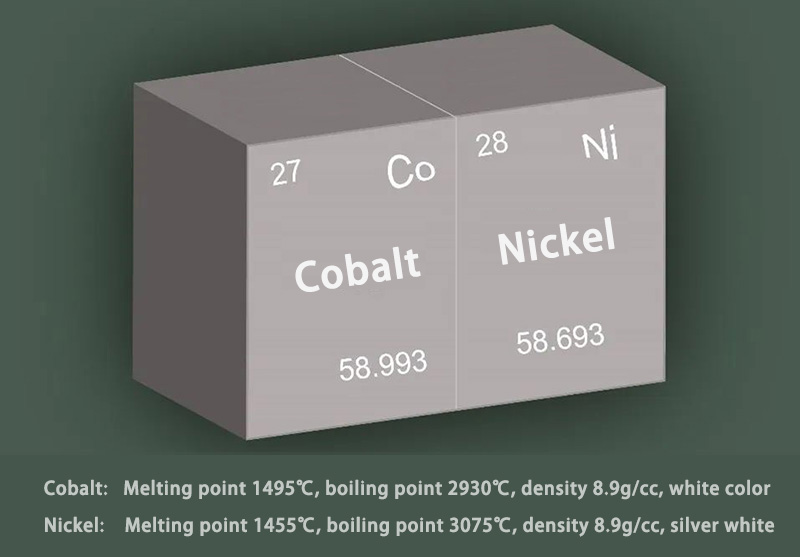
However, cobalt and nickel, which can be called good brothers, perform very differently in the market. The price of cobalt is significantly higher than the price of nickel. Taking 2022 as an example, the price of cobalt fluctuates greatly (42,000 to 75,000 USD/ton), while the price of nickel is relatively stable, maintaining at 30,000 to 40,000 USD/ton most of the time. The maximum difference reaches 3 times.
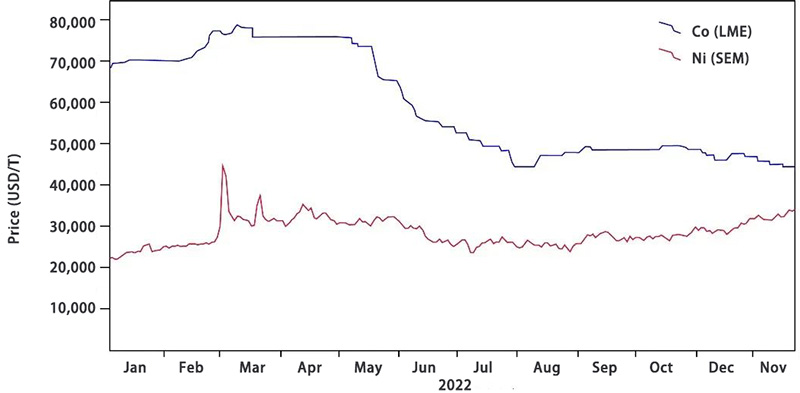
On the one hand, the price difference between cobalt and nickel is affected by market supply and demand, but the underlying reason is also related to the geological properties of the two minerals.
Resource status and pattern
According to the “Global Lithium, Cobalt, Nickel, Tin, and Potash Mineral Resource Reserves Assessment Report (2021)” released by the Global Mineral Resources Strategic Research Center of the China Geological Survey, as of the end of 2020, global cobalt ore reserves were 6.68 million tons and the resource volume was 2,344 Thousands of tons. Global nickel ore reserves are 90.63 million tons and resources are 261 million tons. Global nickel reserves are 13.5 times that of cobalt, and nickel resources are 11 times that of cobalt.
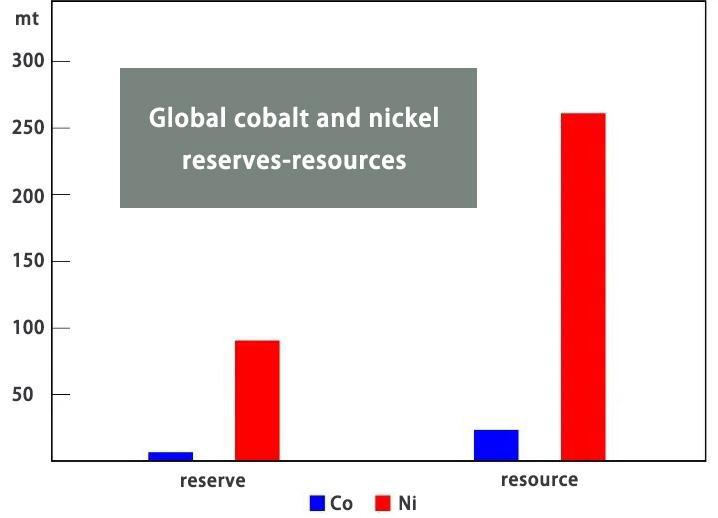 The distribution of global cobalt and nickel ore resources is extremely uneven. Cobalt mines are mainly distributed in countries such as the Democratic Republic of the Congo (DRC), Indonesia, and Australia. Among them, the cobalt ore reserves in the Democratic Republic of the Congo account for nearly half (44.46%) of the world, and the above three countries combined account for more than 70% of the world’s cobalt reserves. Indonesia’s nickel ore reserves account for more than 30% of the world’s nickel ore reserves, and the top three countries (Indonesia, Australia and Russia) account for more than half of the world’s nickel ore reserves (54.18%).
The distribution of global cobalt and nickel ore resources is extremely uneven. Cobalt mines are mainly distributed in countries such as the Democratic Republic of the Congo (DRC), Indonesia, and Australia. Among them, the cobalt ore reserves in the Democratic Republic of the Congo account for nearly half (44.46%) of the world, and the above three countries combined account for more than 70% of the world’s cobalt reserves. Indonesia’s nickel ore reserves account for more than 30% of the world’s nickel ore reserves, and the top three countries (Indonesia, Australia and Russia) account for more than half of the world’s nickel ore reserves (54.18%).
The difference in resources and reserves of cobalt and nickel shows that cobalt is more scarce than nickel (a difference of one order of magnitude), which is the direct cause of the price difference between cobalt and nickel. At the same time, the uneven distribution of cobalt and nickel resource reserves also results in the pricing power of cobalt and nickel being in the hands of a few countries, which can easily cause large fluctuations in the prices of cobalt and nickel. The difference between cobalt and nickel resources and reserves involves the distribution of cobalt and nickel elements in the earth and the differences in mineralization geology.
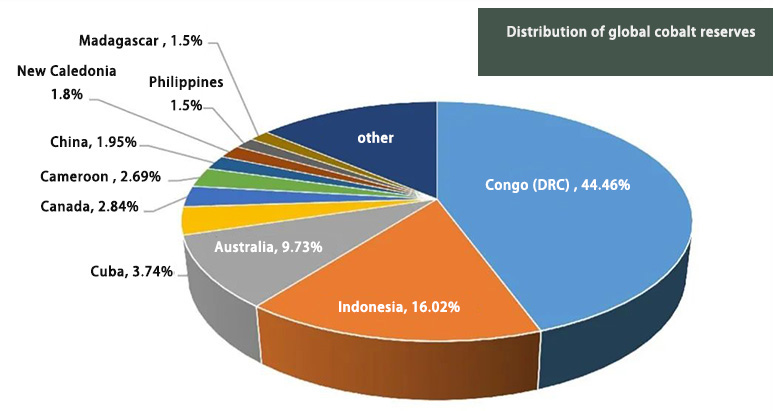
Elemental geochemistry
The outer electron configuration of cobalt is [Ar]3d74s2, and that of nickel is [Ar]3d84s2. The common valences of the two are +2 and +3. The +2 valence is relatively stable, and the +3 valence is highly oxidizing. Cobalt and nickel have dual geochemical characteristics of siderophile and sulphurophile, indicating that they can be symbiotic with iron in the form of metallic bonds, and can also be combined with sulfur in the form of highly covalent bonds. Primary minerals containing cobalt and nickel are mainly sulfide, arsenide, sulfur arsenide and similar compounds. Secondly, cobalt and nickel can also replace metal cations in other minerals in a similar manner (Hanzen et al., 2017). The most common situation is that because the ionic radii of cobalt and nickel are close to those of cations such as magnesium and iron, they mostly reside in mafic minerals (ultrabasic rocks and basic rocks) in the form of isomorphic substitutions) of the main minerals. From the perspective of the geosphere, the cobalt and nickel contents decrease significantly from the core to the mantle and crust; from the perspective of rocks, the cobalt and nickel contents decrease significantly from ultrabasic rocks to basic rocks, and then drop sharply from acidic rocks. The content of cobalt and nickel in the mantle and ultrabasic rocks reaches or approaches the critical grade (Co 0.02%, Ni 0.2%). Therefore, mantle-derived ultrabasic rocks are the most important source of cobalt and nickel mineralization (direct or indirect).
Mineralization geological characteristics
The high similarity in the geochemical behavior of cobalt and nickel elements also leads to the common occurrence of cobalt and nickel mineralization. There are four common types of cobalt and nickel deposits, namely sedimentary-metasedimentary rock-hosting type, magmatic type, weathered laterite type and hydrothermal type. However, the four deposit types have different proportions of cobalt and nickel resources. For cobalt mines, sedimentary rock type is the most dominant type, accounting for about 50% of reserves, followed by weathered laterite type, accounting for about 40%, and magmatic type, accounting for about 7%. For nickel ore, laterite type and magmatic type have an absolute advantage, with the former accounting for about 63% of the total reserves and the latter about 37%.

In addition, unlike nickel, cobalt rarely forms independent deposits and is usually associated with nickel, copper, etc. in an associated state. At the same time, some scholars pointed out that the mineralization of nickel will be accompanied by cobalt, but the mineralization of cobalt may not include nickel, indicating that cobalt and nickel will be separated and cobalt will be enriched again during the mineralization process. For example, mafic-ultramafic rocks derived from basaltic melts form copper-nickel sulfide deposits in the lower part and vanadium-titanium magnetite deposits in the upper part. The lower part is also enriched in cobalt and nickel, while the upper part only has cobalt but no nickel. For another example, as the most important type of nickel ore, laterite-type nickel deposits can be further divided into iron oxide type, hydromagnesia silicate type and clay type. Among them, the iron oxide type is often accompanied by cobalt, while the other two types rarely have cobalt mineralization, indicating that cobalt is more easily lost from laterite than nickel. The lost cobalt is enriched again in sedimentary rocks, providing a rich source of mineral-forming materials for sedimentary rock-metasedimentary rock host-type cobalt deposits. The solubility of cobalt in high-saline fluids is higher than that of nickel, which may also be the reason for the separation of cobalt and nickel in hydrothermal fluids. However, the current understanding of the separation process of cobalt and nickel is still insufficient, and the driving mechanism behind it, especially the migration-enrichment-precipitation mechanism of cobalt element, still needs to be further studied.
Cobalt and nickel are both mantle elements and have similar geochemical characteristics. Mantle-derived ultrabasic rocks are the most important source of cobalt and nickel mineralization. The content difference between cobalt and nickel in ultrabasic rocks is about 18 times. The separation of cobalt and nickel and the re-enrichment of cobalt during the mineralization process. It may have narrowed the gap in cobalt-nickel ore resource reserves (11~13.5 times).
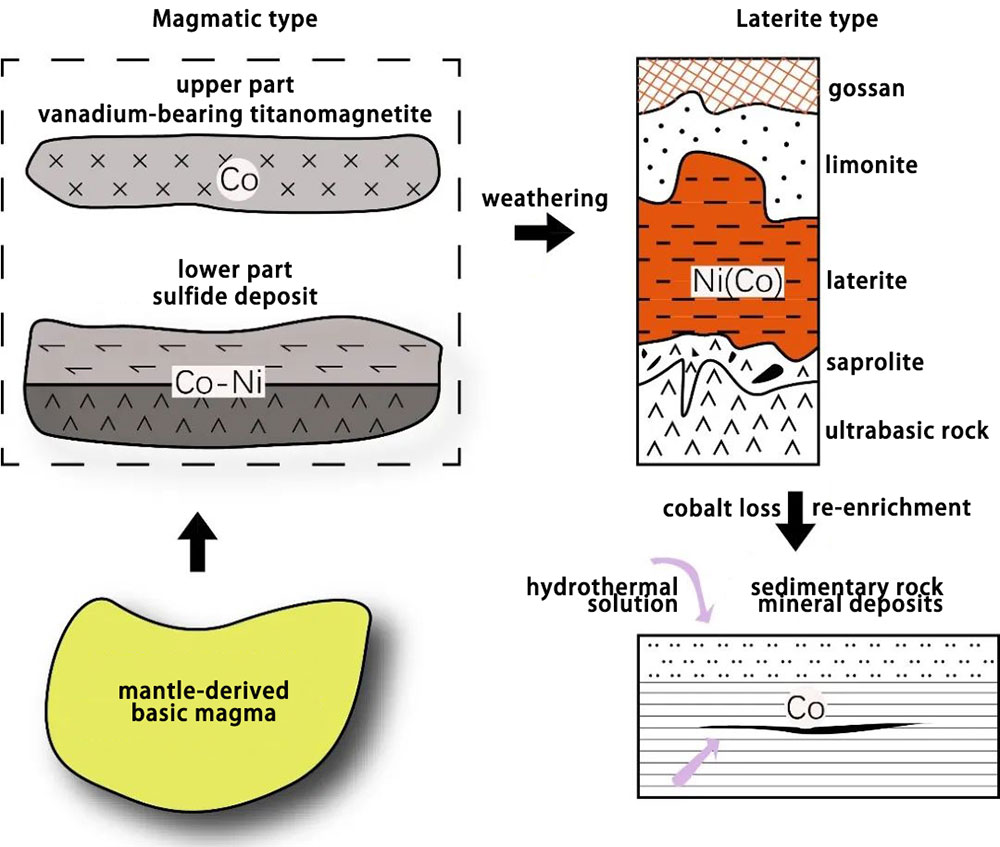
Although there are many similarities in the physical and geochemical characteristics of cobalt and nickel, the differences in content in mantle-derived ultrabasic rocks and the separation of cobalt and nickel during the mineralization process are responsible for the current differences in resource reserves between the two. The underlying reason is also the geological logic behind the price difference between cobalt and nickel.


